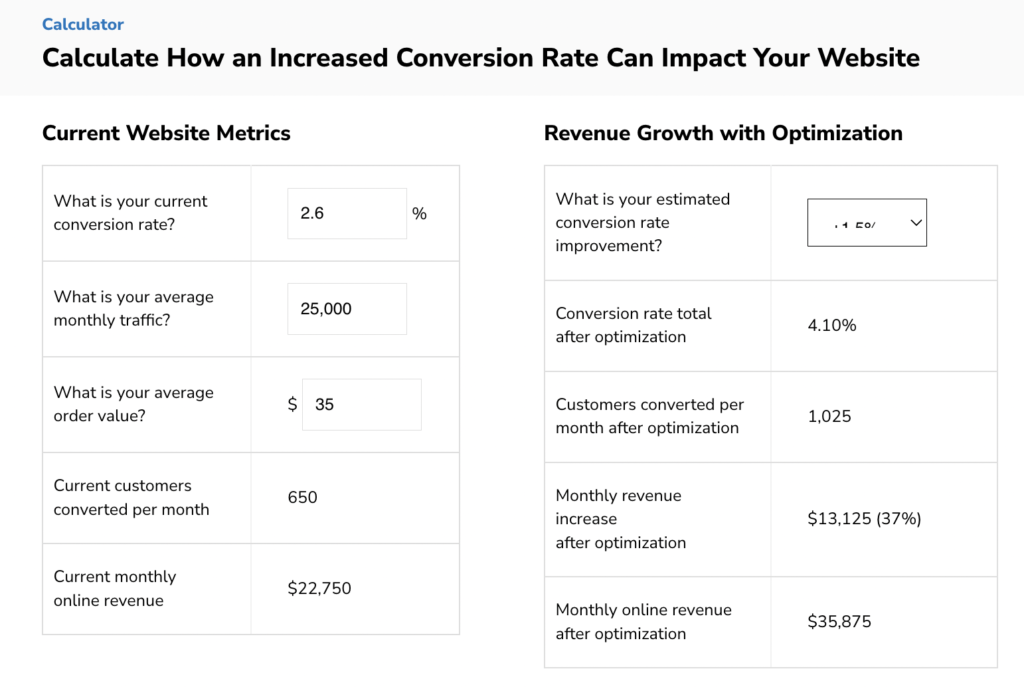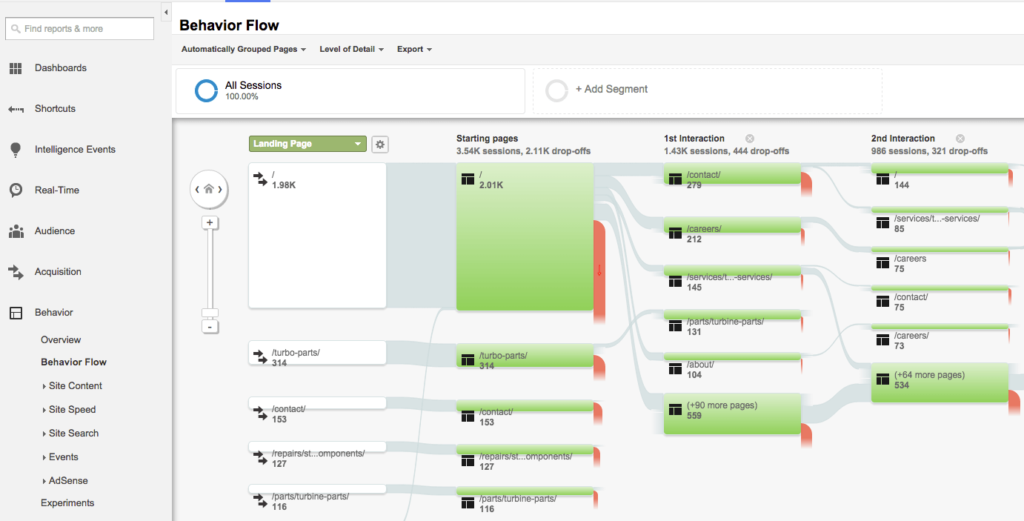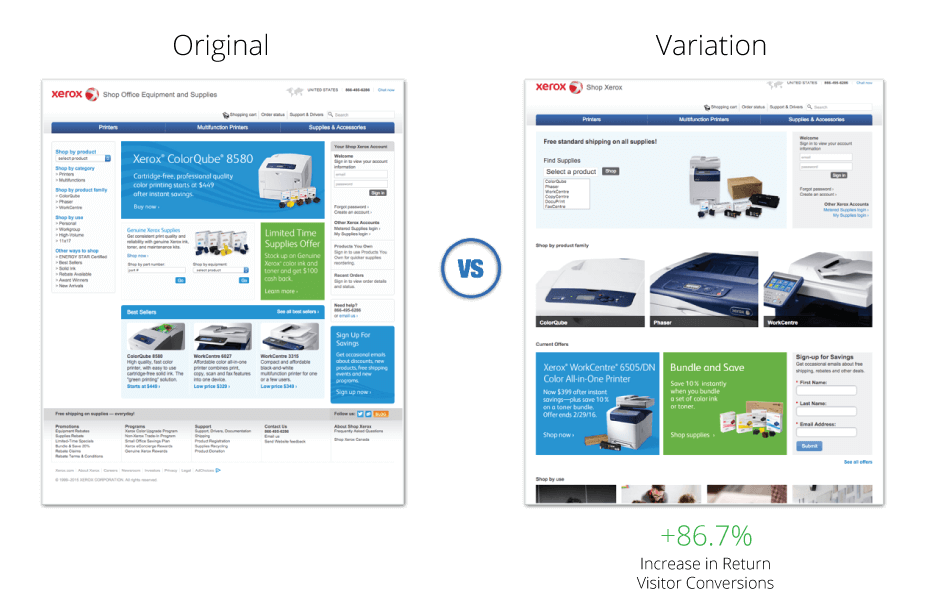
CRO Marketing: How It Fits Into Your Growth Strategy & 5 Steps to Get Started
Learn how to get started with a conversion rate optimization program and where CRO fits into your overall marketing strategy.
Key Takeaways
By the end of this article, you should have the knowledge and resources to “check the box” in these areas…
- Learn what conversion rate is and how to calculate yours
- How to start a CRO practice at your brand today
- Why CRO is an integral part of your marketing strategy
There’s a certain thrill in driving tons of traffic to your site, but if it doesn’t translate into sales, you’re doing something wrong.
In fact, driving traffic is only part of the battle. The challenge really comes when you want to make the most of the traffic you already have–doing this (a.k.a. optimizing your conversion rate) can quickly turn qualified leads into customers and create long-term, sustainable growth.
The less work you have to do to push skeptical shoppers to purchase, the better. As a result, conversion rate optimization or CRO marketing should be an integral part of your overall marketing and general business strategy if you want to maximize traffic, generate more sales, and lower your costs.
What is CRO marketing?
CRO marketing, typically referred to as conversion rate optimization, specifically focuses on increasing on-site conversions. The aim is to remove barriers from the sales path and create a frictionless buyer’s journey that customers slide effortlessly through.
Simply increasing your conversion rate by one or two percentage points can make a huge difference to your revenue, and CRO marketing helps you identify where those tweaks can be made.
How to calculate your conversion rate
Before you start your conversion optimization journey, it’s good to have an understanding of your conversion rate so you know what exactly you’re looking to improve. There’s a simple formula for working out your overall conversion rate:
Number of conversions / number of visitors x 100 = conversion rate
For example, if you have 25,000 visitors over a one month period and 650 people become customers, your conversion rate would be 2.6% (650 / 25,000 x 100 = 2.6). You can run this formula for individual landing pages and product pages, too.
While most ecommerce platforms will show your site’s conversion on the analytics dashboard, it’s always good to check the reporting using your own math with the formula above and original sources like Google Analytics or payment data.
Additionally, it’s important to keep an eye on different time horizons when analyzing your conversion rate. For example, your conversion rate during holiday months or “in-season” period could be way higher than the rest of the year. Your conversion rate could be way down over the last 90 days, but looking at an average of the last 12 months might eliminate the “doomsday” concern. Conversion rates should always be assessed in context.
Now, what kind of ROI can you expect from increasing your conversion rate? As illustrated in our CRO calculator, improving that number incrementally can make a huge difference,:

Increasing your conversion rate by 1.5% can generate over $13,000 extra each month. This figure can be amplified even more by working on a dedicated CRO program and focusing on a marketing strategy that favors conversions.
How to get started with your CRO strategy
It can be tempting to jump right into editing your website and going all gung-ho with optimization, but what works for one site won’t work for another.
You can jump in and “follow your gut” or blindly apply “best practices,” but that typically does more harm than good. Even if it works, it will only get you so far, which is why we often say best practices are the fastest path to mediocrity.
Instead, we recommend taking an approach of “diagnose, then prescribe.” We’re advocates for really honing in on your website and what your visitors want and need to feel comfortable enough to make it all the way to checkout.
If you showed up in the doctor’s office with chest pain, you wouldn’t want them to wheel you directly to the surgery center for an open heart procedure. Instead, you’d hope they would ask some thoughtful questions about your diet, your exercise habits, your family history, your stress levels, the exact severity/location of your pain, and so on…
Doing so would probably lead to something much more reasonable, like blood pressure medication or even some pepto bismol!
Here are the steps we recommend taking to get started the right way with CRO.
1. Analyze your conversion funnel
The first major step is identifying any potential sticking points in your conversion funnel. Think of it as a step-by-step journey and track how many people land on your site, then the percentage of those who go on to add a product to their, then the percentage of those who go on to the checkout, and finally the percentage who actually make a purchase.

Dig into your analytics to find out where shoppers are dropping off (check your bounce rate), which pages get the most traffic, and where your conversion rate is the lowest.
Understanding these numbers will help you spot parts of the funnel that could do with some improvement–maybe your checkout form is too long and confusing, or maybe it’s not clear how customers can add a product to their cart.
You need a birds-eye-view of every part of the funnel before you can start honing in on specific areas with the goal of improving conversions.
2. Set conversion goals
When we say “set conversion goals”, we don’t mean pulling percentages out of thin air without data to back them up. Or defaulting to “industry averages” or “benchmarks” that have no context for your audience, your product, your pricing, or your operational efforts built in. For example, don’t say you “want 50 more conversions from a webpage”. Instead, say you want to generate 50 more conversions for every 5,000 people who visit.
As well as your overall conversion rate, you can set a couple of other conversion goals:
- Number of Net New Customers: divide your net revenue goal by your average sales price to determine how many new customers you need to convert each month
- Lead Goal: divide the number of new customers by your lead-to-customer close rate to figure out how many new leads you need to get each month to hit your conversion goal
Enjoying this article?
Subscribe to our newsletter, Good Question, to get insights like this sent straight to your inbox every week.
3. Tap into qualitative AND quantitative data
We mentioned mining your Google Analytics for key insights earlier, but if you want to create a robust CRO strategy that touches on every part of your conversion funnel, it’s important to combine both qualitative and quantitative data.
For example, your metrics can show you where shoppers are dropping off, but it doesn’t tell you why.
To know this, you need to use qualitative data methods, like surveys, user testing, or heatmapping to figure out where the actual sticking points are. Getting first-hand feedback from real people provides context to the numbers and can help you plan your CRO marketing strategy moving forward.
Outdoor lifestyle brand Snow Peak found this out the hard way. It was spending a large sum of money driving traffic to the site but wasn’t seeing a high ROI or a particularly good conversion rate for the amount of traffic it was getting.
While implementing our Conversion Growth Program™, we quickly identified that customers were getting frustrated with “Out of Stock” notices. It was leading to high bounce rates, desertion rates, and abandoned carts. We put a simple element in place that let customers be notified when a product was back in stock, which resulted in a yearly revenue increase of 149%.
4. Identify potential tests to run
Testing will make up a huge chunk of your CRO strategy. With the data sources you have, you can start to paint a picture of what your customers truly want. Set up the initial tests you want to run–for example, if you’ve spotted that your checkout form is causing drop-offs because it’s too lengthy, try testing a shorter form and see how that affects your conversion rates.
You don’t need to run all your tests immediately. In fact, when you’re just getting started, you should never run more than one test on a given page, because you run the risk of having your results be influenced by multiple variables, so you’ll never truly know what’s working.
Instead, take this opportunity to identify potential tests you can run. Create a list of “to-do tests” based on qualitative and quantitative data, which will then go into your CRO workflow.
When Xerox came to us with conversion and site abandonment problems, we quickly identified usability challenges across the site. To address these, we developed a testing roadmap that meant we could optimize the most challenging areas. Then, we launched a series of A/B and multivariate tests through our ongoing Conversion Growth Program™ that led to 86.7% growth in conversions for returning visitors.

5. Create a strategy or CRO workflow
Conversion optimization is an ongoing process and one that never ends (because, let’s face it, it’s impossible to reach a perfect 100% conversion rate). The idea behind CRO marketing is that you’re constantly inching towards higher conversion rates with regular tests, tweaks, and tracking.
Once you’ve figured out the sticking points in your conversion funnel and have outlined several tests you can start with, make sure you plot time to measure your results and then create new hypotheses based on them.
Ideally, you should document the CRO workflow in a project management tool like Asana or Airtable. We recommend you keep a backlog of testing ideas and also track your active tests through the stages of brainstorming, development, analysis, and reporting. This way, you’re constantly reminded to not just test optimizations but also regularly review them and use them to inform broader decision making.
How to integrate a CRO team to improve your results
CRO is such an integral part of ecommerce, but plenty of brands put it on the backburner in favor of driving traffic or splashing cash on low-performing ad campaigns. And, when they do remember to focus on conversion rate, they simply add a CTA to several pages and call it done.
The proof really is in the numbers, though–simple tweaks here and there can have a dramatic impact on your bottom line, which is why it can be hugely beneficial to have a dedicated CRO marketing team working solidly on your conversion marketing.
There are two ways you can do this:
1. Hire an internal team
Build your own in-house team of CRO experts. This can be a great way to drive results from the inside and work with people who know your brand inside out, but it can be costly hiring an entire new team especially if you’re a small business or just starting out.
2. Work with a dedicated CRO agency
The alternative is teaming up with an experienced CRO agency. This gives you access to seasoned professionals who know the ins and outs of conversion rate optimization and can dedicate their time and energy to improving your results while you and your internal team focus on other parts of business.
When you work with an external team you often get access to a suite of CRO tools that might be very costly for you to get on your own, plus you have a direct line to industry experts who constantly have their finger on the CRO pulse.
If you do decide to go it alone, these are just some of the tools you’ll need to get started.
- Google Analytics: get cold, hard data for your website, from the number of sessions and visitors, to your bounce rate and key drop-off points
- Mouse tracking and heat map tools: see exactly where website visitors go on a page to identify the most important elements
- User testing tools: find out what real people think about your website by watching over their shoulder as they navigate through the conversion funnel
- A/B testing tools: make it easy to automate A/B tests and dig into the results with a dedicated testing tool
- Survey tools: ask visitors what they think about your site through automated pop-ups that are triggered as they browse
How CRO fits into your broader marketing strategy
CRO marketing helps bolster a range of different marketing tactics, from email marketing and paid campaigns to search engine optimization (SEO) and social media marketing.
Think about it: all of those marketing efforts are concerned with driving traffic to your site, boosting brand awareness, and retaining customers, but if people land on your site and don’t convert, those efforts have pretty much gone to waste.
Take SEO, for example.
It’s a common misconception that CRO comes after SEO–we see a lot of clients get their SEO set, but panic that they’re not ready for a CRO strategy because they don’t want to mess up what they’ve already achieved with SEO. In actual fact, CRO works well in tandem with SEO. Google wants you to run tests on your site, because a better customer experience means a better overall user experience for Google users.
And your CRO efforts don’t just complement your SEO efforts, they’re integral to them. Sure, your site might show up high in the search results because you’ve done a great job with SEO, but if visitors aren’t turning into customers, what’s the point?
The ultimate goal should be to drive website traffic with a solid SEO strategy (or any other marketing strategy, for that matter) and then convert visitors with a really robust and data-driven CRO program.
Driving traffic is great, but you need to convert those visitors to actually run your business and create sustainable growth. Marketing isn’t worth much at all with CRO, which is why it’s not an either/or situation, it’s a must-have, integral part of your overall strategy.
To continue learning about conversion rate optimization and actionable tips for how to get started, take a look at Opting In To Optimization. In the book, The Good’s founder packages more than a decade of knowledge and experience into just a handful of immutable laws that can help savvy brands convert more visitors into buyers.

About the Author
James Sowers
James Sowers is the former Director of The Good Ventures. He has more than a decade of experience helping software and ecommerce companies accelerate their growth and improve their customer experience.